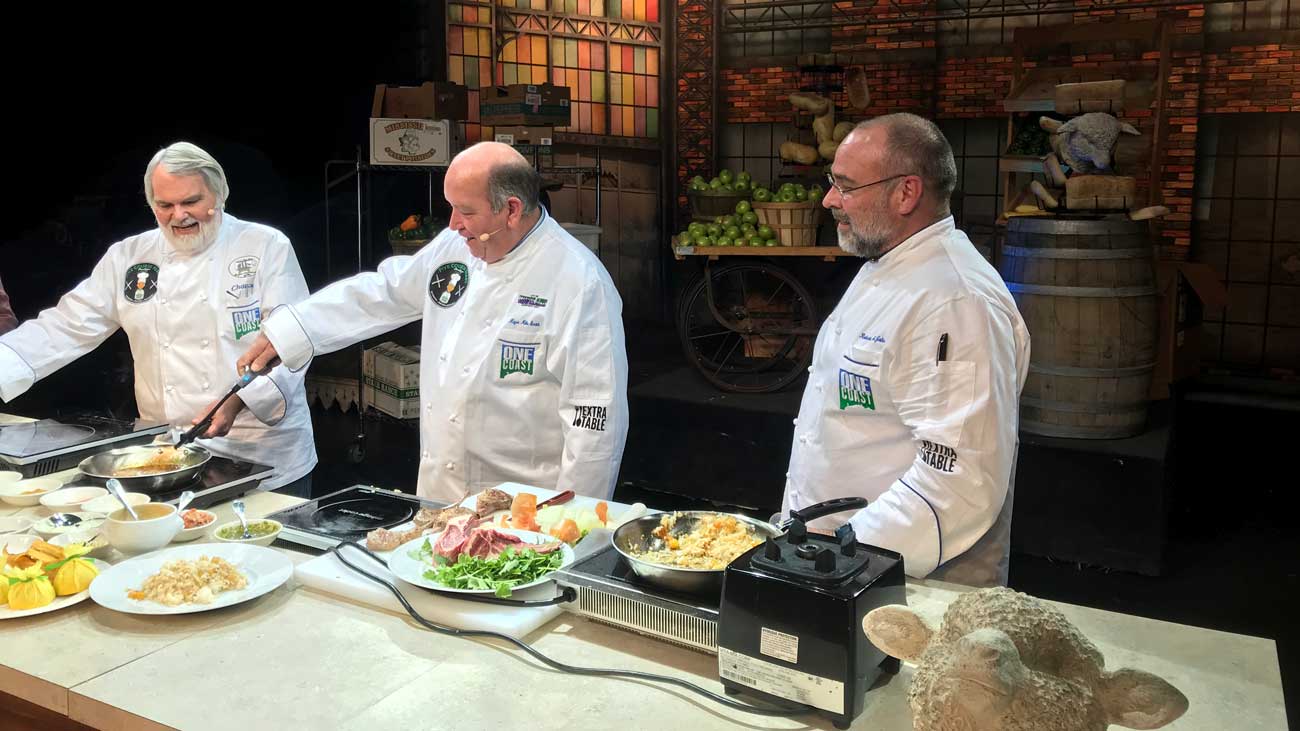February in South Mississippi is a strange beast. It’s 30 degrees and overcast as I type though in a few days it might be 72 and sunny. Such is life on the edge of Zone 8.
Geographical location affects almost every aspect of our lives. In the northeast people are going to spend a significant amount of time shoveling snow today. As a lifelong resident of Zone 8, I have never shoveled snow. Not once.
They’re playing golf in South Florida and California today while power lines are in danger from a hard freeze in Tennessee. In July and August things slow down in this part of the world due to the heat and humidity, whereas the weather is perfect on the Great Lakes around that time of year.
The weather affects our eating habits, too. During these chilly nights they might be eating bean soup in the Northeast, potato soup in the Midwest, chili in the Colorado Rockies, tomato soup in the Northwest and gumbo down here.
The one universal cold weather food that we eat no matter what part of the United States we call home is vegetable beef soup. It might be the quintessential cold weather comfort food. There is something about vegetable beef soup’s stick-to-your-ribs heartiness that calms one’s soul.
Some call it beef stew others ask for vegetable beef soup. I have always thought that the difference between a stew and a soup is that a stew is a main course dish and a soup is a starter.
Soups and stews are probably the oldest known dishes to mankind. For thousands of years people have been throwing various ingredients into a pot and creating pottages. They are easy to make, they’re easy to eat, and they’re universally loved all over the world. Every culture eats soups, stews, porridges, and chowders.
In Italy vegetable beef soup is called minestrone. There are slight variations— olive oil, more herbs, squash and zucchini— from how we southerners make vegetable beef soup, but it’s not that different to be 5,200 miles, a large ocean, and a moderately sized sea away.
In Asia the soups are mostly broth based. In the Middle East curries rule the table. I am typically not a big soup eater. I love gumbo but I rarely order soup in a restaurant. I am the exception to the rule, however. We sell tons of soups, bisques, and gumbos in our restaurants. Though I will almost always eat a good vegetable beef soup on a cold day.
The vegetable beef soup recipe I prepare at home is the same one that is served in the restaurant. I created it on one of those rare Hattiesburg snow days about 12 years ago. My daughter was home from school, she and I were building a snowman, and the only lunch that made sense that day was vegetable beef soup.
The icy weather and slippery roads made it difficult to go to the grocery store. I had no stew meat in the freezer, but I did have a leftover rib-eye steak in the refrigerator. I chopped it into small pieces and it made a huge difference in the outcome of the final product. I also substituted V-8 juice for tomato juice. In future versions I took it to another level and substituted Zing Zang Bloody Mary Mix for the V-8.
The key to god soups is in using good stocks. Homemade stock is always best. Always. There is no substitute for homemade stock. Actually there are a lot of substitutes for homemade stocks but none are better substitutes. It makes perfect sense, the heartier and richer the stock, the more complex the final flavor profile of the dish will be. There is a reason that students in culinary school learn to make stocks early in the process. They are that important.
It would be hard for me to decide which I like better— vegetable beef soup or minestrone. So this week I’ll do what I do in a restaurant when I can’t decide between two dishes and I order both— two recipes for one column. Make your favorite or make them both. Either way you’ll be one step away from carrying on an ancient culinary tradition and enjoying a soup or stew that tastes good no matter which temperate zone you call home.
Vegetable Beef Soup
3 Tbl
1 1 /2 lbs Ribeye steak trimmings (cut into 3/4-inch cubes) beef shoulder or stew meat can be used
1 1 /2 tsp Salt
1 tsp
1 cup
1 cup
1 cup
1 Tbl
1 /2 tsp Dried Thyme
2 tsp
1
15 oz can Tomato, diced
1 1 /2 quart Beef stock
1 cup
1 cup
1 cup
1 Tbl
1 Tbl
Heat 1 tablespoon of oil over high heat in a large skillet. Season the meat with half of the salt and pepper. Brown the meat in olive oil. Do not overload the skillet. Over loading the skillet will cause the beef to steam instead of brown. Brown meat in batches, add more oil when necessary then place cooked meat in a large stockpot.
Add one tablespoon of oil to skillet and sauté the onions, carrots,celery and garlic for five minutes over medium heat. Add thyme, steak seasoning and bay leaf. Deglaze the pan by adding the canned tomatoes (with the juice) using a wooden spoon to remove any stuck-on proteins. Cook five minutes on high, and add to the meat in the stockpot. Place beef broth in the stockpot and cook over low heat. The soup should just barely simmer. After 1 hour, add Zing Zang, corn and potatoes. Continue cooking another 45 minutes. Remove from heat and stir in remaining salt, pepper, Worcestershire and Kitchen Bouquet.
Yield: approximately one gallon
Minestrone Soup
1/4 c. Pure olive oil
1 1/2 c. Onion, diced
1 1/2 c. Carrot, diced
1 c. Celery, diced
1/2 c. Garlic, minced
1/4 c. Kosher salt
1 tsp Dried basil
1 tsp Dried oregano
1/2 tsp Dried thyme
2 tsp Fresh ground black pepper
1/4 tsp Crushed red pepper
2 ea. Bay leaf
2 TB Balsamic vinegar
1/2 c. White wine
1/4 c. Tomato paste
2 ea. 28 oz. can San Marzano tomatoes, chopped
1 gal. Vegetable Stock
2 c. Zucchini, medium dice
2 c. Yellow squash, medium dice
1 ea 10 oz. package frozen spinach, thawed, drained
2 ea 15 oz. can kidney beans, drained
1/4 c. Pesto
1 TB Worcestershire sauce
Heat olive oil in a stockpot over medium-high heat.
Add onions, carrots, celery, salt, peppers, basil, oregano, thyme and bay leaves. Cook for 8-10 minutes, stirring frequently.
Add wine and balsamic vinegar. Continue cooking for 3 minutes.
Add tomato paste and cook 6-8 minutes, stirring constantly, being careful not to let it burn.
Add canned tomatoes and chicken stock. Simmer for 1 hour.
Add zucchini, squash, spinach and kidney beans and cook for 8 minutes.
Remove from heat and stir in pesto and Worcestershire.
Yield: 1 gallon



